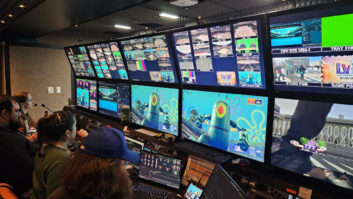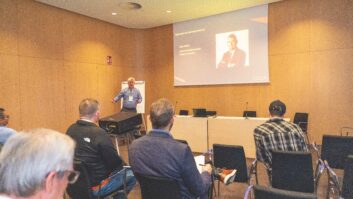
Billed in advance as the CEDIA Expo that would be dominated by Apple’s iPad, this year’s Atlanta extravaganza certainly had more than its fair share of the little oblong panels on its exhibition stands – though the manufacturer itself was absent. Some custom installers see the iPad (along with soon-to-come competing products from rival technology firms) as a threat, and certainly, if up until now you have been making a good proportion of your profit from selling expensive touchpanel controllers from the major CI players, you could be in for a rude awakening.
Yet the consensus on the show floor was that the iPad is as much an opportunity as it is a threat, for two reasons. First, the thousands of apps already in circulation – and the many more in development – increase the likelihood of custom installation becoming core to the whole residential environment, not just its entertainment systems. And second, the whole iPhone and iPad concept has whetted an appetite for touch-based control among a populace that was formerly uncomfortable with it.
This is the rationale behind Control4’s ‘4Store’ application marketplace, which launched in June of this year and already encompasses internet radio, energy use monitoring, social media, and security apps from top lock manufacturers such as Yale and Baldwin. The company’s industry relationships with consumer electronics manufacturers such as Pioneer, LG, Sony and Panasonic should ensure there is plenty more to come, too.
Meanwhile, on the basis that there is still a requirement for fixed touch controllers as well as the portable kind, Philips Pronto was showing the TSW9500, its first in-wall touchscreen control panel, alongside ProntoTunes, a new application that provides two-way control over Apple iTunes, Apple TV and Apple AirPort Express.
Yet even in this world of compressed audio and video distribution, performance remains a key part of the CEDIA Expo experience. In fact, it is remarkable just how many exhibitors take large stands on which to show not just surround-sound audio but good, old-fashioned two-channel hi-fi being pumped out by large loudspeakers of dramatic and sometimes radical visual design.
In some cases, such as the products of newcomer Ton Art, these designs are intended to blend in with interior décor. Using a combination of traditional and contemporary materials – wood, marble, fibreglass, gold and epoxy resin, to name but a few – Ton Art speakers take the form of tall sculptural columns, moulded table ornaments or volcanic-looking boulders. Each contains a light source to conceal the real reason for its presence in the room, which is to provide high-quality music reproduction in a visually unobtrusive way.
Other companies are more explicit about their intentions. Through a partnership with the famous piano-maker, Steinway Lyngdorf makes a series of large-scale speaker enclosures with a characteristic piano-black finish, and can boast a string of celebrity endorsements. Likewise, MSE Audio Group had received a visit from Scary Spice to its CEDIA Expo stand, the nineties pop icon signing autographs next to the bespoke loudspeaker she ordered to be painted the racing red of a famous Italian sportscar maker which, for contractual reasons, cannot be named. The paint had to be shipped from Italy to the US and cost more than the enclosure itself, apparently.
Oddball products and events such as these serve to underline the diversity of the CEDIA Expo and the widely differing expectations of the industry’s customer base. Some clients live in new-build homes, others in centuries-old buildings; some want AV in every room but want to see it only when they’re using it; others are happy for their technology to make a visual statement, 365 days a year.
Meeting all these varying demands will be part of the challenge of being a custom installer in the second decade of the 21st century – but also part of the fun.







